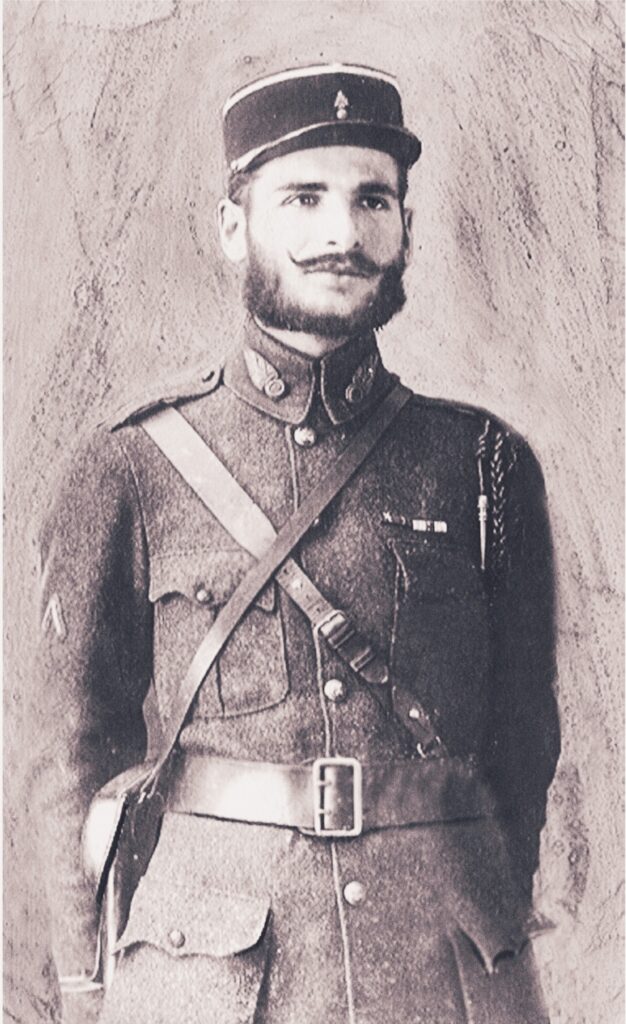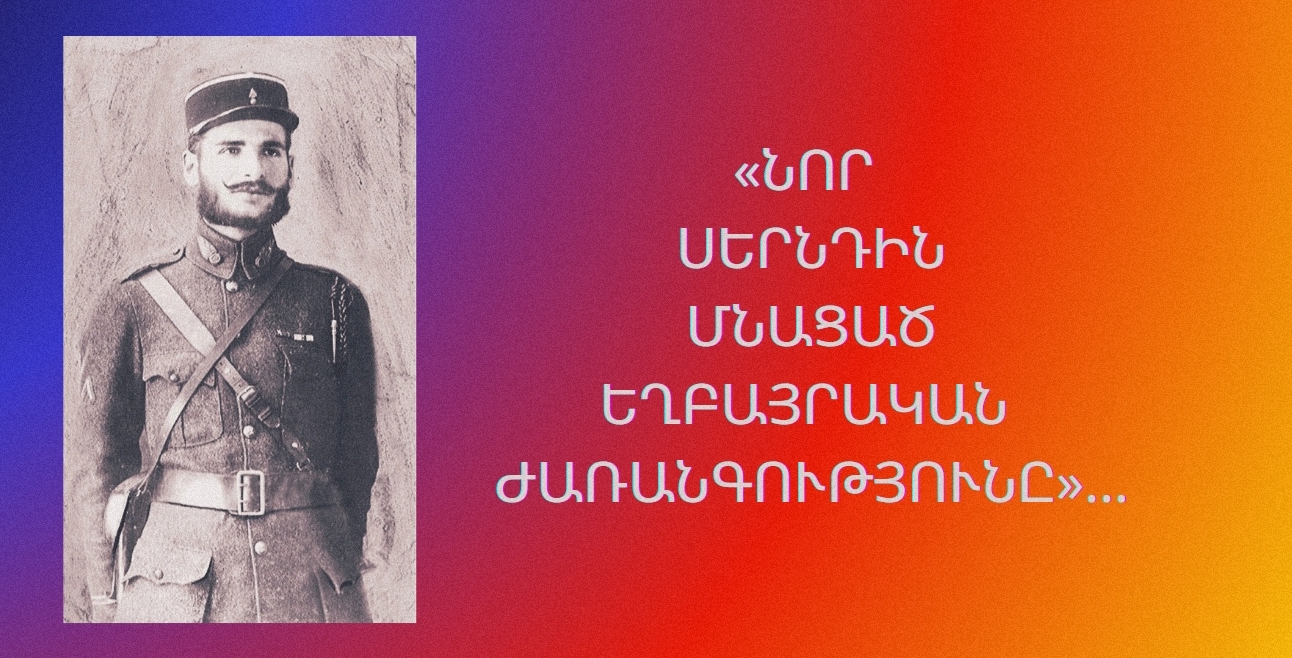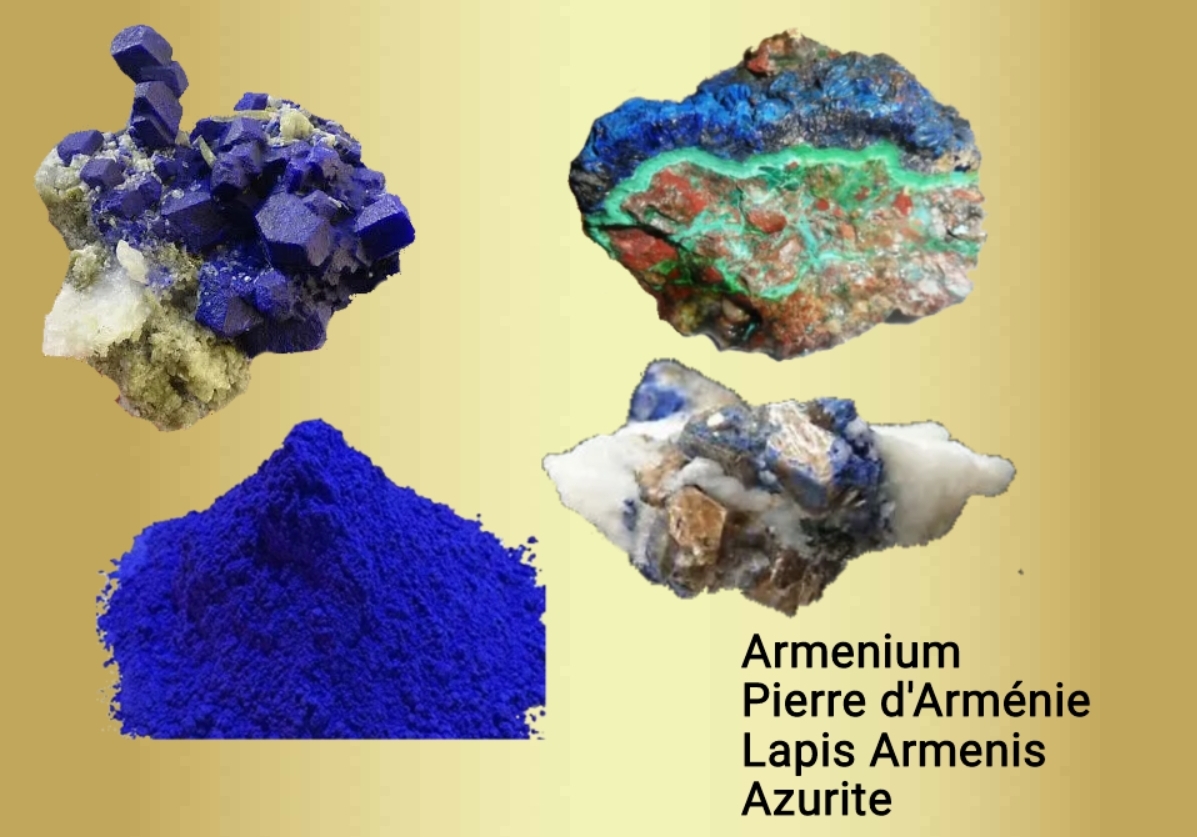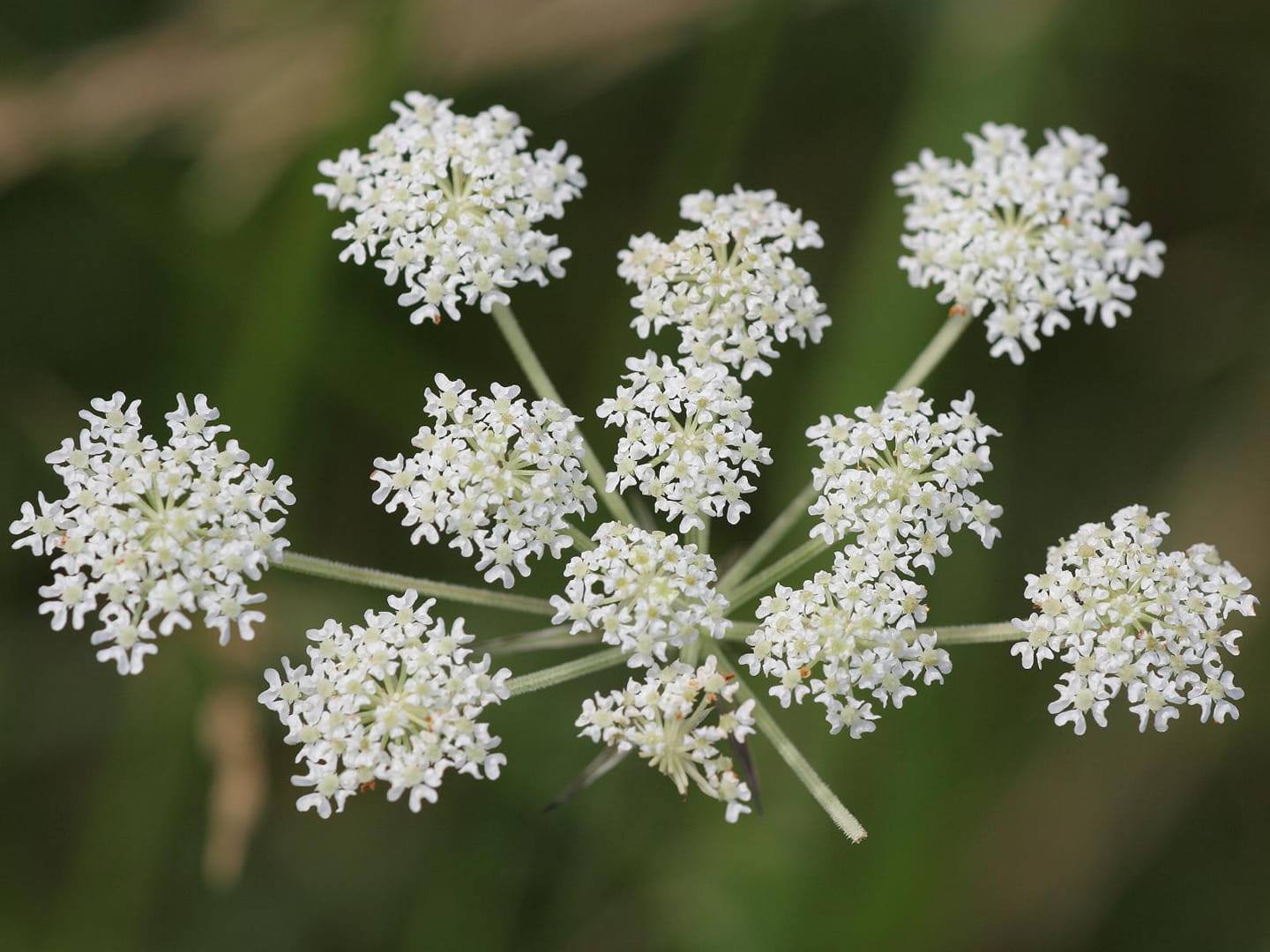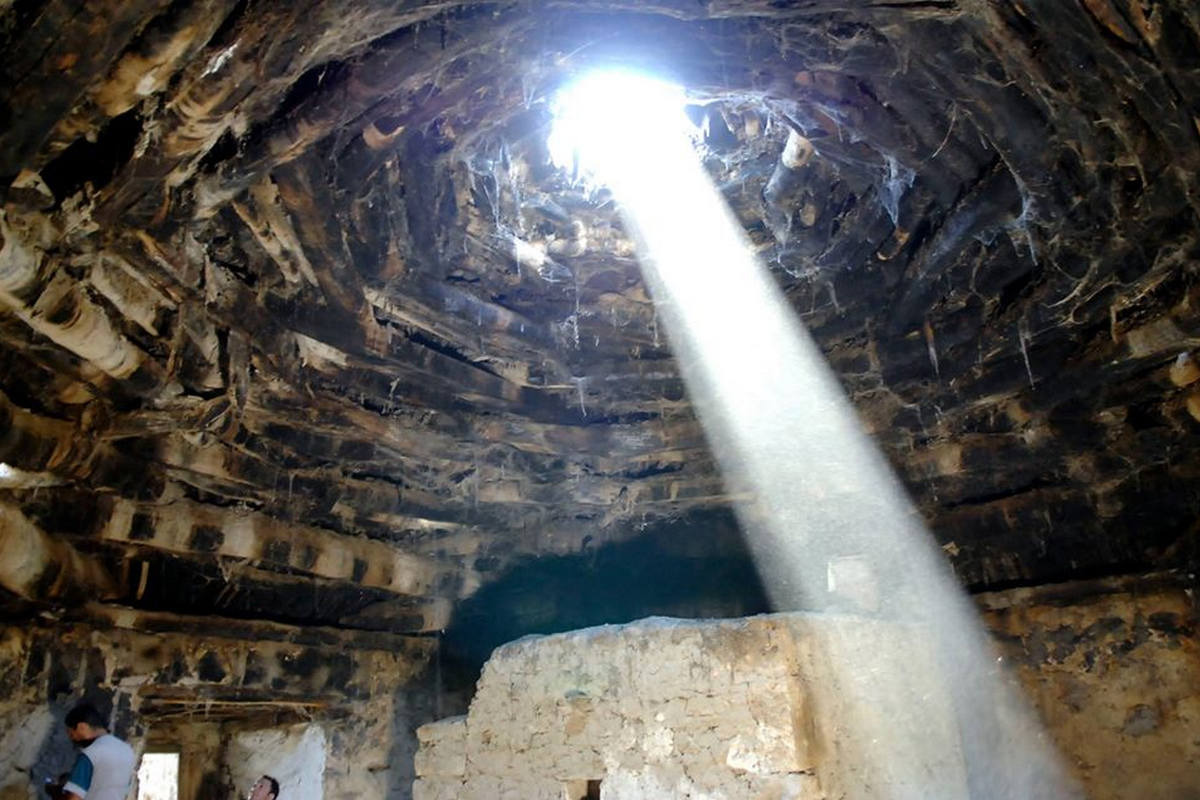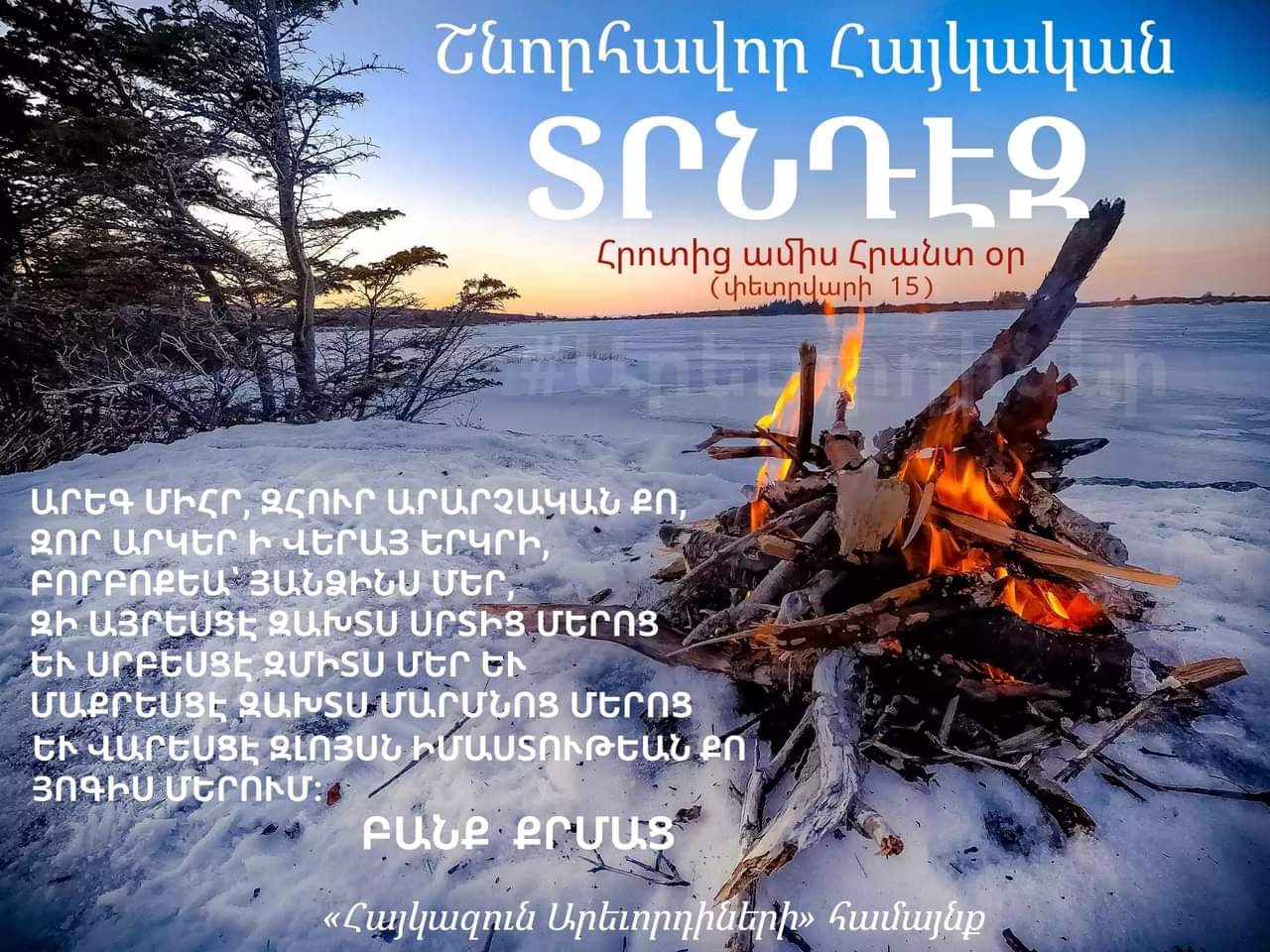In 1916, following a conference held on October 27 at the French Embassy in London, an agreement was signed between representatives of the Entente Powers—Mark Sykes (representing England), Georges Picot (representing the French government), and Boghos Nubar, President of the Armenian National Delegation. Based on this agreement, the “Armenian Legion” (1916-1920), an Armenian volunteer unit within the French army, was formed in 1916.
The Armenian legionnaires, numbering over 4,500 soldiers, were to participate in military operations against the Ottoman Empire under the command of French forces on the Syria-Palestine front, and later on the Cilician front. In return, France promised to grant the Armenians of Cilicia autonomy after the Allies’ victory, based on the “firm guarantees” given to Boghos Nubar.
The Armenian Legion first took part in combat operations on September 19, 1918, in Palestine at the heights of Arara, achieving a glorious victory.
“Men! You know, tomorrow morning is our wedding day, the day we have all been waiting for. Every soldier must be ready by 4 a.m. sharp. This is the hour of revenge and righteous retribution. It is for the liberation of the Homeland that we will fight this sacred battle. This is the only service we can offer to our unfortunate nation, to make it happy through the price of our blood.
I don’t know how many of us will fall on the battlefield when tomorrow’s curtain drops, but I am certain that the proud Armenian brow will not taste the bitterness of shame! Our past must inspire us, and let the future instill faith in us all.”
With this message, delivered late at night on September 18, 1918, Armenian officer John (Hagop) Shishmanian, serving in the French armed forces, addressed the Armenian volunteers of the “Eastern Legion” camped on the slopes of Mount Arara in Palestine, announcing the attack on the “Turkish and German positions.”
On April 24, 1927, during the unveiling of a memorial dedicated to the Armenian volunteers in Jerusalem, former “legionnaire” Hagop Arevian, the delegate of the American and Cairo “Legion Union,” recalled this event in his speech. This excerpt is taken from his address, published in Cairo in 1928 by the “Armenian Legion Union” in the book “The Volunteer: On the 10th Anniversary of the Victory at Arara.”
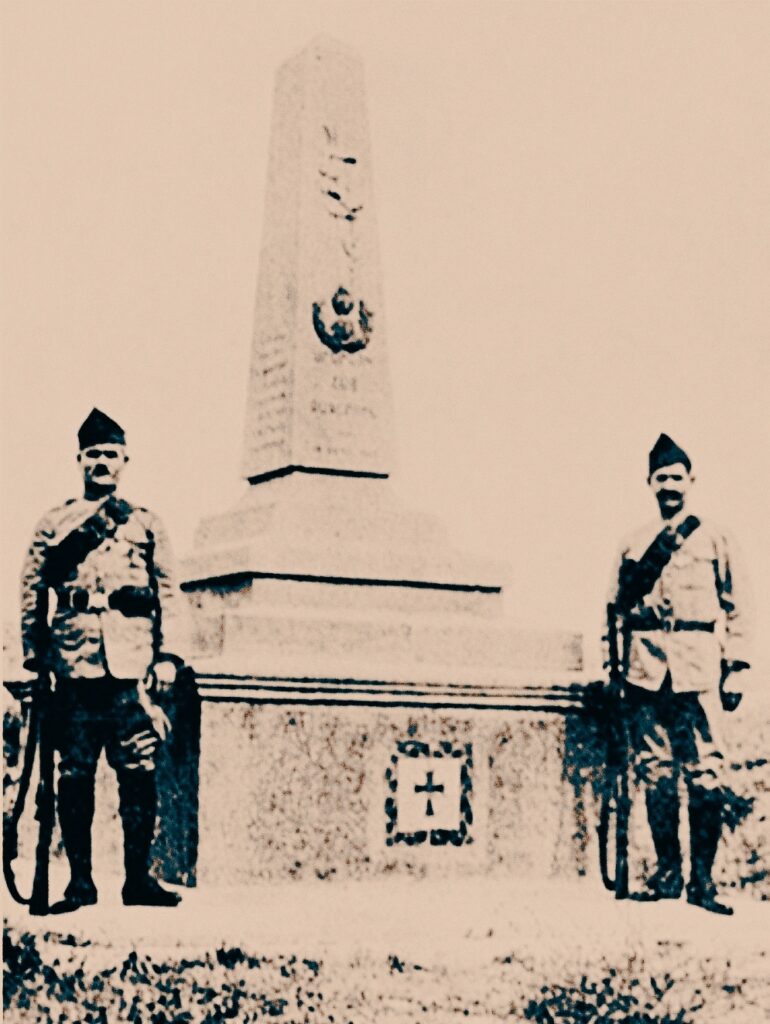
The memorial dedicated to the Armenian soldiers who perished in the Battle of Arara is located in Jerusalem (photo courtesy of the National Archives of Armenia).
“On the evening of September 18, 1918, the news spread among the legionnaires that the next morning they were to launch an attack on the enemy army. Everyone was joyfully preparing, as if they were attending a wedding. Their excitement was boundless. Finally, after two long years of continuous training, they would show the enemy their military prowess.
It was the morning of September 19 when the order for a lightning attack was given. Ignoring all dangers, even death, they charged at the enemy positions, and within an hour, the designated positions were captured. All that remained of the enemy were lifeless bodies. Unfortunately, not everyone was fortunate; about a hundred comrades fell heroically. Despite their severe wounds, they were never demoralized and shouted to those advancing ahead with voices filled with boundless vengeance: ‘Hagop, don’t forget me!’ or ‘Galust, avenge me!’
Here you see the memorial to 23 of them, whose remains now rest here. They closed their eyes forever with joy, but with vengeance in their hearts.”

Honor to their immortal memory!
The battle lasted approximately twenty hours, during which the enemy fiercely bombarded the lost positions and attempted to retake them with a counterattack. But the Armenian soldier remained steadfast at his positions, and with his rapid-fire rifles and machine guns, thwarted the Turkish “Yıldırım” (meaning “Lightning,” K.A.) army, which was the force opposing the advancing enemy columns. They lived up to their name only when it came to retreating.
As you can see, it was on the eve of the ceasefire that the legionnaires received their baptism by fire. However, they more than made up for it by fulfilling their military duties. They remained at their post for another two years, during which they faced many other challenges, and the number of their martyrs far exceeded twenty-three, surpassing 123. But the last of them were left without graves, resting in some desolate corner of unknown fields. They faced many unequal battles, sometimes at great sacrifice, but always emerged victorious.
This did not go unnoticed by their French commanders either. All the fallen had received their wounds either on their forehead or chest.
Every time there was a dangerous mission to be carried out, the “Hakobs” and “Galusts” would step forward from their ranks and whisper in their commanders’ ears that they had not forgotten the voices of the “Martiroses” and “Jingirians,” who had fallen on the hill of Arara, saying, “Avenge us.” And so, there came the days when the “Hakobs” and “Galusts” also heroically fell on the path of the great national cause.
When Galust lost his left arm, I kissed his forehead and tried to offer him a few words of encouragement, but I had made a mistake, for he did not need any encouragement. His response was, “It’s not my arm that hurts. You know I was supposed to fight for several people, and I haven’t satisfied my vengeance yet.”
As you can see, even the very last to fall had not yet taken their revenge. Therefore, it remains for the new generation, as a fraternal inheritance, to exact that vengeance, and should the opportunity arise, to once again deal ruthlessly with the enemy…
